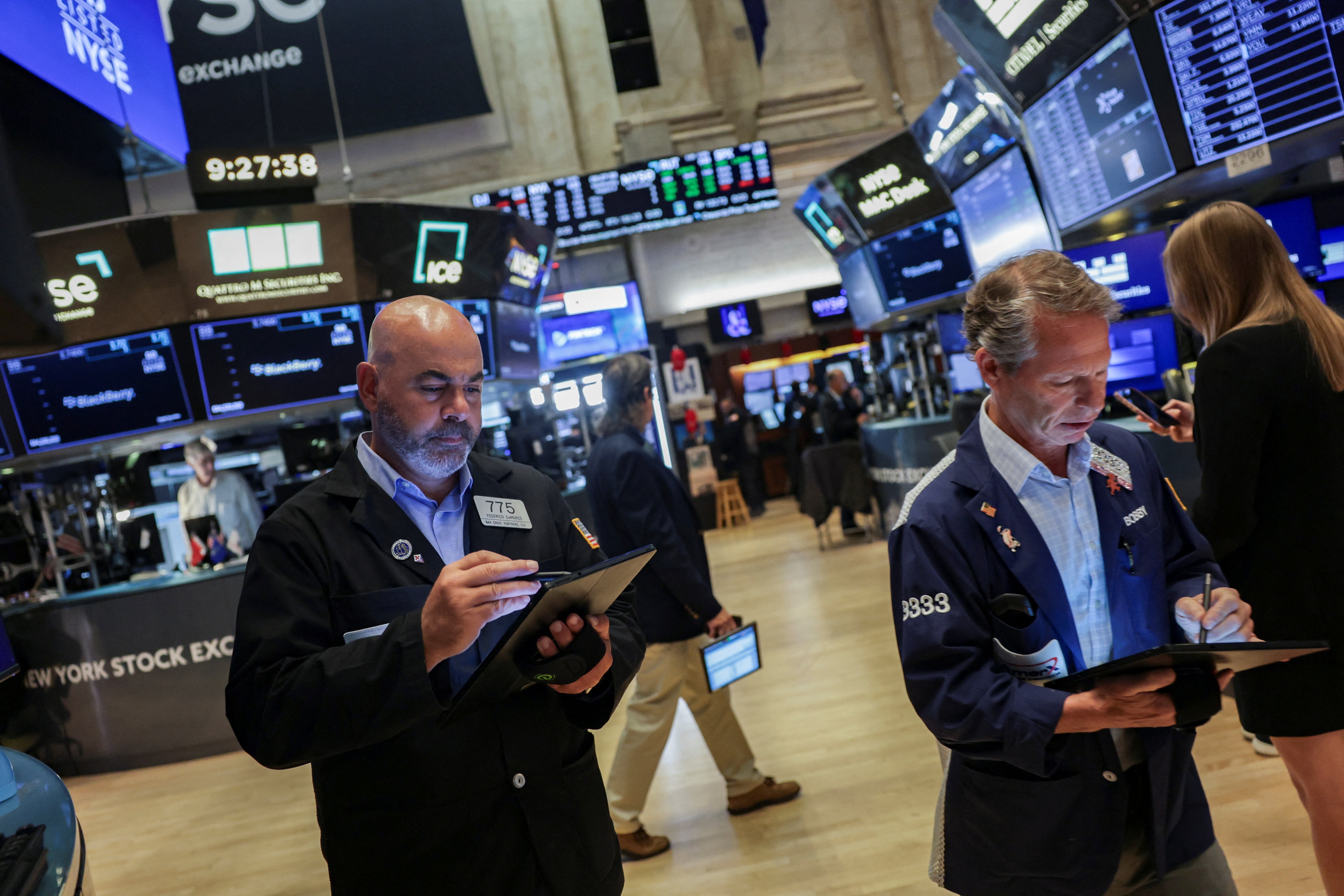Smartphones and influencers are changing the way US adults shop, here's how

The internet has reshaped how, when and where people can make purchases.
Image: Unsplash/Jonas Leupe
Stay up to date:
Technological Transformation
- As the busiest shopping season looms, a new US survey reveals the current purchasing habits of the country's consumers.
- Smartphones have become a top way for Americans to shop, particularly the younger generations, it says.
- While four-in-ten social media users say influencers and content creators impact what they purchase online.
- Here are some other key takeaways from the Pew Research Center's findings.
From ordering household items to purchasing the latest fashions, the internet has reshaped how, when and where people can make purchases. At the same time, social media has become an important tool for consumers, with some Americans – particularly younger adults – following and turning to influencers for recommendations, according to a Pew Research Center survey conducted in July.

As the busiest shopping season looms, Americans have several ways to shop online, but smartphones have become a top way to do so. Roughly three-quarters of U.S. adults (76%) say they ever buy things online using a smartphone, while a somewhat smaller share (69%) say they ever make purchases via desktop or laptop computers. Far fewer Americans (28%) report ever buying things online on a tablet.
Mobile phone shopping is especially common among adults under 50. Around nine-in-ten Americans ages 18 to 49 (91%) say they ever buy things online using a smartphone, compared with 69% of adults 50 to 64 and 48% of those 65 and older.
Age gaps are modest when it comes to shopping on a tablet. Still, those ages 30 and older are more likely than those 18 to 29 to say they ever use a tablet to purchase things online (30% vs. 20%). Experiences shopping on a desktop or laptop computer do not statistically differ across age groups.
Online shopping habits also vary by household income. Across all three types of devices the survey asks about, adults with upper incomes are more likely than middle- and lower-income adults to say they use each device to make online purchases. This is most pronounced when looking at computer use: 86% of adults with higher incomes say they use a computer to buy things online, compared with 74% of those with middle incomes and about half (51%) of those with lower incomes.
There are also some differences by race and ethnicity. Asian (84%) or White (72%) adults are more likely to say they use a computer to buy things online than their Black (61%) or Hispanic (57%) counterparts. There are more modest racial and ethnic differences in purchasing things by smartphone, while similar shares of these racial and ethnic groups report online shopping on a tablet.
While there are no statistical gender differences when it comes to making online purchases via a smartphone or tablet, men are more likely than women to report buying things on a computer (72% vs. 66%).
About one-in-three Americans shop online with a smartphone at least weekly
Beyond whether or not Americans use certain devices for their shopping, the survey also asks how often these online shoppers take to their devices to do so.

About a third of U.S. adults (32%) say they use a smartphone to buy things online at least on a weekly basis, while 21% say the same for desktop or laptop computers. This figure drops to just 7% for shopping on tablets.
Americans in their 30s and 40s stand out when it comes to how often they use a smartphone to shop. Roughly half (49%) of those ages 30 to 49 say they make purchases online at least weekly using a smartphone, compared with 38% of those ages 18 to 29 and even smaller shares of those 50 and older.
There are more modest age differences when it comes to shopping weekly or more via a computer, and no age differences for making these purchases on a tablet.
Americans in upper-income households are more likely than those in middle- or lower-income households to report using a smartphone or a desktop or laptop computer to make online purchases on at least a weekly basis. When it comes to using tablets at least weekly to make purchases, there are no statistically significant differences by household income.
Americans generally favor in-person over online shopping
Even as large shares of Americans are turning to the internet to make purchases, many still value in-person shopping.

When asked whether they generally prefer to buy things online or from a physical store, 57% of U.S. adults say, given the choice, they prefer in-person shopping. A smaller share (38%) opt for an online experience.
Americans across most major demographic groups tend to express preferences for physical stores over online shopping, but this balance differs somewhat across groups. For example, adults under 50 are more likely than those 50 and older to say they generally prefer to buy online.
Many younger social media users follow influencers, make purchases based on their recommendations
As Americans reach for their digital devices for online shopping, social media has also emerged as a way for people to promote products, share tutorials and create content in the hopes of influencing people’s tastes, purchases or opinions.
Companies are partnering with these influencers to reach consumers, with some estimating that brands are spending billions on influencer marketing. But how many Americans follow these types of tastemakers? And how much are their buying habits influenced by them?

Overall, four-in-ten social media users say they follow influencers or content creators, while about half (52%) say they do not do this and 8% are unsure, according to the Center’s survey.
Following influencers is correlated with age: 72% of 18- to 29-year-old social media users say they follow influencers or content creators, compared with 44% of those ages 30 to 49 and even smaller shares of those 50 to 64 (26%) or 65 and older (12%).
While there are modest gender differences overall, women social media users under 50 are more likely than their male counterparts in the same age range to say they follow influencers or content creators (60% vs. 47%).
Beyond age and gender, there are also differences by race and ethnicity. About six-in-ten Hispanic social media users (59%) say they follow influencers or content creators on these platforms, compared with 44% of Black users and a third of White users.
Income differences are fairly modest: 44% of social media users with lower incomes say they follow influencers, compared with 37% of those with higher incomes. Social media users in the middle-income category (39%) do not statistically differ from the other groups.
Not only do some social media users follow influencers, they are also turning to these accounts to inform their buying decisions. Three-in-ten adult social media users say they have purchased something after seeing an influencer or content creator post about it on social media. When looking only at users who follow these accounts, that number rises to 53%.
Among social media users, women are more likely than men to report buying something after seeing an influencer’s or content creator’s post (36% vs. 21%). And 41% of adults under 30 say they have done this, compared with 33% of those ages 30 to 49 and 22% of those 50 and older.
There are sizable gaps when looking at age and gender together. For example, half of 18- to 29-year-old female social media users report they have purchased something after seeing an influencer’s post, compared with 28% of male users in the same age range.
Black or Hispanic Americans who use social media are more likely than White users to say they have purchased something after seeing an influencer’s post. There are no statistical differences by income, with about three-in-ten users across income categories saying they have done this. (There were not enough Asian American social media users to be broken into a separate analysis.)
A majority of young women who use social media say influencers, content creators impact what they buy

About four-in-ten social media users (39%) say influencers or content creators impact their decisions about what to purchase at least a little, but only 3% say these groups have a lot of impact on what they buy.
Younger social media users are the most likely to say influencers affect their purchasing habits: 54% of 18- to 29-year-old social media users say influencers impact their purchasing decisions a lot or a little. That share drops to 42% among users ages 30 to 49 and to 29% among those 50 and older.
Women who use social media are more likely to utilize influencer recommendations than are men. This is particularly true among young women: 62% of female social media users ages 18 to 29 say influencers or content creators affect what they purchase at least a little.
There are some racial and ethnic differences on this question as well, with Hispanic (48%) and Black users (43%) more likely than White users (33%) to say influencers affect their buying habits at least a little. There are no statistically significant differences by household income among social media users who say influencers have an impact on their decisions on what to purchase.
Don't miss any update on this topic
Create a free account and access your personalized content collection with our latest publications and analyses.
License and Republishing
World Economic Forum articles may be republished in accordance with the Creative Commons Attribution-NonCommercial-NoDerivatives 4.0 International Public License, and in accordance with our Terms of Use.
The views expressed in this article are those of the author alone and not the World Economic Forum.
Related topics:
Forum Stories newsletter
Bringing you weekly curated insights and analysis on the global issues that matter.
More on Financial and Monetary SystemsSee all
Dalal Buhejji
August 14, 2025
Hallie Spear
August 13, 2025
Sandra Waliczek
August 8, 2025
Rebecca Geldard
August 7, 2025
Aurora Matteini and Derek Baraldi
August 6, 2025
Sandra Waliczek and Harry Yeung
July 29, 2025






